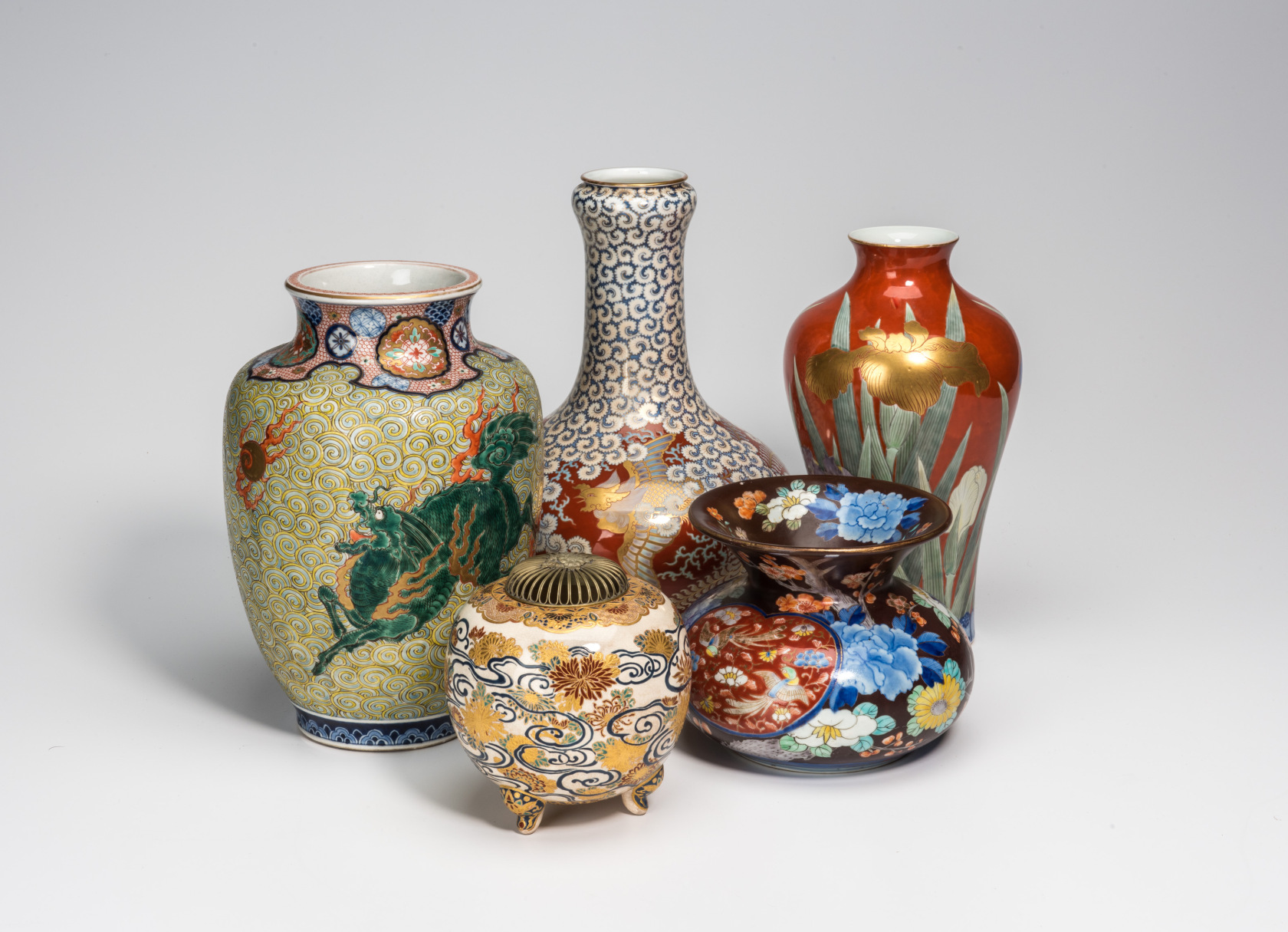Recently, the museum received a wonderful collection of approximately 100 Japanese ceramics and 22 prints, many of them triptychs, from Professors Walter Melion and John Clum. The collection is stunning in the quality, beauty, and presence of each print and ceramic.

The ceramic collection was begun by Hans Melion (Walter’s father), who was born in Vienna during the reign of Emperor Franz Joseph (r. 1848–1916). From a family of collectors, Hans began acquiring Japanese ceramics in the late 1920s and early 1930s. Forced to flee Vienna in 1940, he migrated east, first to Shanghai then Manila, where he was befriended by a community of Anglican missionaries, including a woman named Nellie McKim whose father had been the Anglican bishop of Tokyo. Nellie, a great admirer of Japanese ceramics, encouraged Hans to rebuild his collection and he continued to do so after moving to San Francisco in the 1960s.
The Melion collection centers on decorative ceramics that were produced in Japan between the 1880s and 1930s, with a preference for Imari and Kutani pieces. Hans was a connoisseur of underglaze and overglaze techniques, and he was sensitive to the relationship between a pot’s shape and its painted decoration. When he died in the late 1990s, Hans left a bequest of funds to fill gaps (works by unrepresented Imari factories and workshops) in the collection.

Terminology used to describe and distinguish various types of ceramics during this period is often confusing. The most common descriptors are kiln, family, and place names and sometimes these overlap. For example, imari ceramics are also called Arita or Kakeimon ceramics. Arita is a town located in Kyushu, Japan’s southernmost island whose principle economic and artistic activity is devoted to the production of high-end overglaze ceramics. Imari is the port from which porcelain was shipped to other parts of Japan and the West. Sometimes these ceramics are identified as Kakeimon after the name of the seventeenth-century potter Sakaida Kakeimon who perfected the technique of overglaze enamel decoration. His kiln was near the town of Arita. Kutani is another place name also located in Kyushu near the city of Kanazawa. But, with a long history of production there are several types of Kutani ware, which are differentiated by age and decorative technique.
The collection brings together some of the finest examples of Japanese ceramics created during this window of time and specificity of place. Many pieces in the collection were produced by the Fukugawa family factory in Arita. It makes high-quality ceramics decorated with exquisite detail and technical perfection that are fit, quite literally, for an emperor. The Fukugawa factory has been the purveyor of Japanese ceramics to the imperial family since 1910.
Unusually, the collection also includes many pairs of ceramics. It is hard enough to find one piece in pristine condition, so image the difficulty of finding two! The entire collection is of the highest quality, and the addition of these marvelous ceramics enriches our holdings in immeasurable ways. Future guests to the museum can look forward to seeing a rotating selection in the galleries, and they will likely come away impressed and delighted by these masterpieces of Japanese art.
Judith A. Stubbs, PhD
Pamela Buell Curator of Asian Art
Share this feature
How to cite this page
Stubbs, Judith A. "Fit for an Emperor." Collections Online. Sidney and Lois Eskenazi Museum of Art, Indiana University, 2020. https://artmuseum.indiana.edu/collections-online/features/japanese-ceramics.php.
